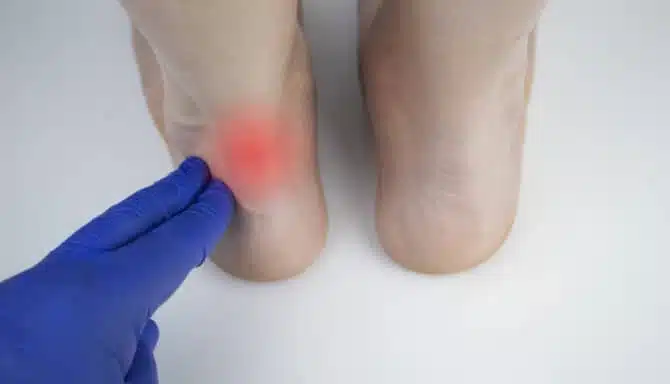As children’s foot development takes its first steps, it’s common to encounter a few bumps along the way. From in-toeing to Sever’s disease, these growing pains are part of the journey as little ones explore the world with developing feet.
The vast majority of foot issues to do with children grow out as the child ages. Some conditions are due to genetic conditions, posture, and a familial history. A Chiropodist/ Podiatrist will assess the child’s feet and take a medical history. it is especially important if you find the foot issue is affecting your child’s walking:
- Do they stumble
- Can it be painful
- Can the issue change with running or walking?
- Is walking or running a chore or struggle?
Let’s take a look at what foot conditions might correspond with your child’s age.

Ages 1-3: In-Toeing and Toe-Walking
Troublesome toes occurring during the “terrible twos” can be concerning. But these quirky walking patterns are totally normal developmental milestones for children’s foot development. No cause for alarm or invasive treatment!
In-toeing, also known as pigeon-toeing, is when a child’s feet turn inward instead of pointing straight ahead while walking. Toe walking is when a child walks on the balls of their feet with their heels off the ground. Both are very common and usually the child with grow out of both.
Tip toe walking is also reduced with encouragement of placing the heel to the ground. Child toys like walking saucers influence a child tip toeing and can even encourage it.
There is no true consensus on treatment especially for in-toeing. The child usually outgrows it. Orthotics might be helpful as well as bracing or casts. But it depends upon severity. Surgery is usually offered to older children.
Up to Ages 3-4: Flat Feet
Children around this age will have pen planus, also known as fallen arches or flat feet. This is when the entire sole of their foot contacts the ground while standing and walking. Traditional children’s foot development is at play here, as arches in children’s feet develop around age 6 and this is called congenital flatfeet. Acquired flatfeet is based upon activity levels, joint ligaments, footwear and living area and can be seen in adolescence. In most cases the child will grow out of it.
For ages 3-4, unless a familial history, pain/ hindering everyday activity, no treatment is generally needed for flat feet before this point. If your child’s flat feet persist as they age, in which case you may want to consider custom orthotics, stability shoes and other treatments for flat feet.

5+ Years Old: Blisters
As kids get older, gain a sense of independence and participate in more physical extracurricular activities and outdoor play, they may start to develop skin conditions on their feet. Enter: blisters. These are a pretty common condition that’s usually harmless, but can painful and bothersome for kids when they walk. Blisters form as a result of excessive friction between shoes and the foot’s skin.
Read here to learn the best ways of preventing foot problems like blisters and how to choose the right shoes for children!
Puberty and Growth Spurts: Sever’s Disease
Did you know that the concept “growing pains” in children is not what most people think it is? While kids may experience pain as they grow, the pain itself is not caused by growing.
But what can cause pain for kids going through puberty is something called Sever’s Disease, which is like a kid’s-only version of injuries like plantar fasciitis, Achille’s tendonitis and heel spurs.
Sever’s disease kicks in when a growing heel gets overworked, causing inflammation. It leads to sharp heel pain, especially when kids are on the move, like during sports and playtime! Kids between 9 and 14 are the most vulnerable.
Solid foot care for kids can help offset Sever’s disease:
- Try the RICE method: rest, wrapped ice, compression and elevation.
- You should also buy your child supportive footwear to ease the strain on the heel.
- Gel heel cups are very helpful
- Gentle calf muscle stretches help with the Achilles complex
- Avoiding high-impact activities can also help speed up recovery.

Kids Shoe Tips
With the large selection of shoes available it can be difficult to find the best shoes for kids. What do you look for? Here are some kids shoe tips:











